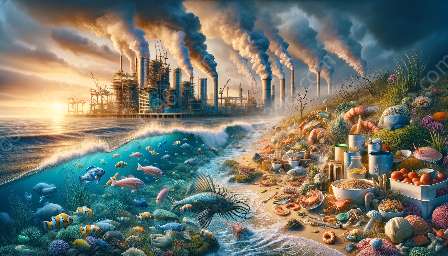Seafood contamination is a concern for both human health and the environment. Understanding the sources of contamination, its impact on pollution, and the science behind seafood safety can help us make informed decisions. This guide will explore these topics in detail, providing insights into the various aspects of seafood contamination.
1. Origins of Seafood Contamination
Seafood contamination can originate from various sources, including:
- 1.1 Industrial Pollution: Industrial activities, such as chemical manufacturing, mining, and power generation, can release pollutants into water bodies, leading to contamination of seafood.
- 1.2 Agricultural Runoff: Pesticides, herbicides, and fertilizers used in agriculture can wash into waterways, contaminating aquatic environments and seafood.
- 1.3 Sewage and Waste Disposal: Improper disposal of sewage and waste, including plastic pollution, can contaminate aquatic ecosystems and seafood.
2. Impacts of Seafood Contamination on Pollution
Seafood contamination has far-reaching impacts on pollution, affecting both marine ecosystems and human health. The key impacts include:
- 2.1 Environmental Disturbance: Contaminants in seafood can disrupt marine ecosystems, affecting the health of aquatic species and the balance of the ecosystem.
- 2.2 Human Health Risks: Consumption of contaminated seafood can pose serious health risks to humans, including exposure to toxic chemicals and heavy metals.
- 2.3 Economic Consequences: Pollution from seafood contamination can lead to economic losses, such as declines in fishery yields and impacts on tourism.
3. Seafood Science and Safety Measures
Advances in seafood science have led to the development of safety measures to mitigate contamination risks. These include:
- 3.1 Monitoring and Testing: Regular monitoring and testing of seafood products help identify contamination risks and ensure consumer safety.
- 3.2 Sustainable Practices: Adopting sustainable fishing and aquaculture practices can reduce the risk of contamination and promote environmental stewardship.
- 3.3 Regulatory Frameworks: Government regulations and industry standards play a crucial role in setting safety guidelines and enforcing compliance to protect consumers and the environment.
By understanding the sources of seafood contamination, its impact on pollution, and the science behind seafood safety, we can work towards sustainable and safe seafood practices that benefit both human health and the environment.

